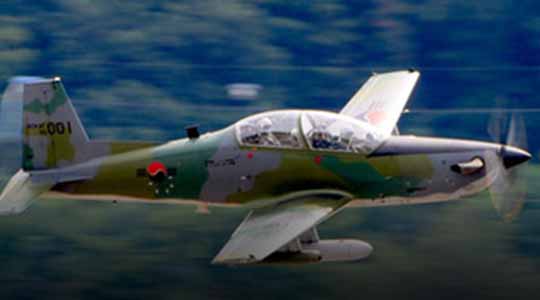MONTREAL – CMC Electronics (CMC) is pleased to announce that Korea Aerospace Industries (KAI) has awarded a new contract to CMC for the modernization of the Republic of Korea Air Force (ROKAF) fleet of KA-1 trainer aircraft used for advanced mission training and light attack missions.
KAI was looking for a best-in-class cockpit upgrade to renew their products and provide ROKAF’s KA-1 fleet with more modern avionics with room for growth. Drawing from a long and fruitful business relationship, CMC worked closely with KAI to meet their request and proposed its state-of-the-art mission computer-based cockpit built on the PU-3000, the world’s first certified multicore mission computer. The PU-3000 and its partitioned, embedded, software applications offer a flexible solution to integrate several conventional multifunctional displays (MFDs) or a single large area display (LAD) configuration as used in the KA-1 solution. The PU-3000 software development kit also allows KAI to develop specific proprietary mission applications on their own.
“This new contract is a timely and strategic development for all parties involved. We believe that the upgraded KA-1 platform with a PU-3000 driven LAD interface will both increase aircraft availability and better prepare ROKAF pilots for their future modernized frontline fleet of KF-X fighters.” commented Mr. Brad Nolen, Vice President, Sales and Marketing at CMC Electronics.
Mr. Jae Min Park, Deputy Senior Manager, Aircraft Procurement team, added: “KAI is confident that the KA-1 avionics upgrade program will be successfully completed in a timely manner adding vastly improved system performance and capabilities to the KA-1 aircraft.”
CMC’s solution allows KAI’s trainer to emulate the advanced avionics of today’s cutting-edge fighter aircraft. The system employs the latest in cockpit management technology, resulting in better and more rapidly trained pilots at a far lower cost than conventional training.
The PU-3000 avionics computer is the world’s first civil certified multicore mission computer. It can host multiple avionics applications reducing equipment count and integration costs. Modular by design, it can be used as a common computing platform able to host a large variety of functions into a single unit and is capable of driving multiple screen sizes with the redundancy needed for flight critical functions.
For more information, visit www.cmcelectronics.ca











